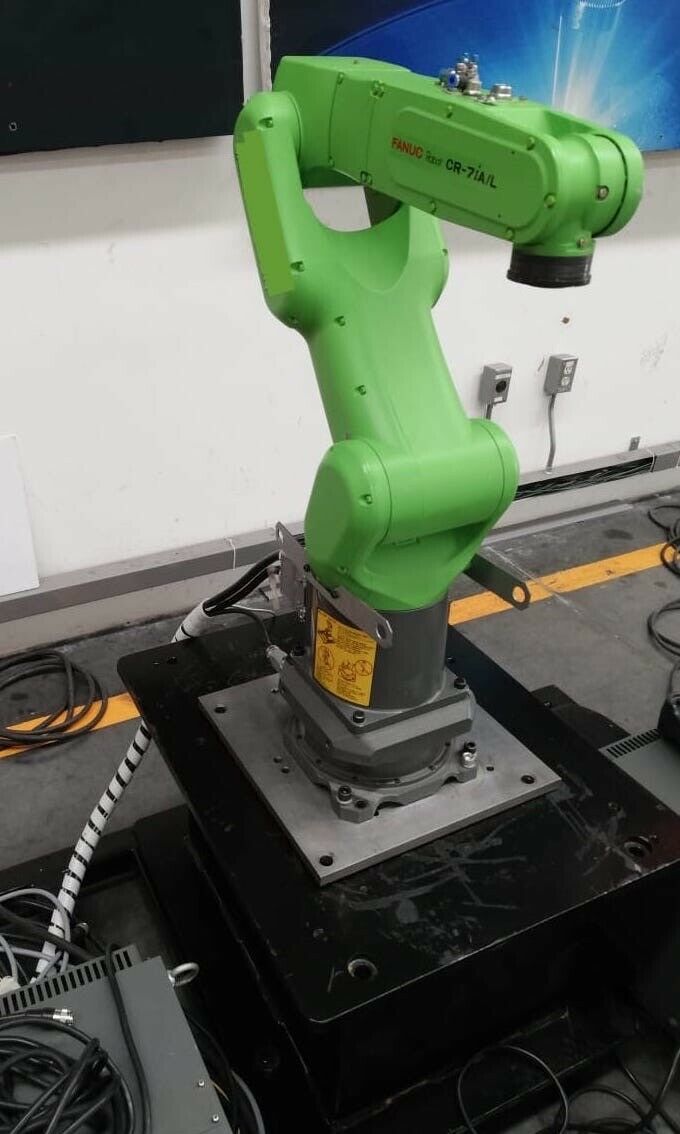Cobots, also known as collaborative robots, have emerged as one of the biggest trends in robotic automation over the past few years. Unlike traditional industrial robots, cobots are designed to work and interact directly with humans. They are built with multiple safety features including robotic force sensors, speed monitoring, rounded exteriors, and the elimination of pinch points. These safety features allow the FANUC CR-15ia and other cobots to operate in close proximity to workers without any barriers. The collaborative nature of these robot manipulators has made robotic automation more accessible as manufactures who may not have been good candidates for traditional robotic automation, can now automate with cobots.
Advantages of Cobots
- • User-Friendly - Cobots are the most user-friendly industrial robot arm and have a low learning curve. Most cobots can be setup and programmed within just a few hours. Hand-guidance programming allows these robots to be programmed by simply guiding the robot arm through the waypoints of an application. The simple programming method of these robotic manipulators takes place within minutes. The user-friendliness of cobots makes them ideal for those just getting started with robotic automation.
- • Size - The vast majority of cobots are compact and lightweight. Their small size requires minimal space and allows them to be tabletop mounted. Space savings is not the only benefit of their small size as they can also be easily relocated throughout factories. The Universal UR5 can be quickly moved and programmed to fill in where needed along production lines.
- • Reduced Equipment - The built-in safety features of cobots means less additional equipment is needed, reducing the overall footprint of the robotic system. With cobots fencing, light curtains, and area scanners are not required. Cobots do not need to be closed off from workers unlike traditional factory robots.
- • Ability to Collaborate with Humans - Since cobots can work alongside humans, processes that could not be automated in the past now can be. Before cobots if an application could not be 100% automated by a robot it was not a candidate for robotic automation. Now with cobots the concept of humans working with robots has become a reality. Cobots can assist human workers on tasks which can result in significant productivity gains.
Disadvantages of Cobots
- • Payload Limitations - Cobots are not capable of automating heavy payload applications. Currently the highest payload cobot is the FANUC CR-35iA with 35 kg. However, most cobot payloads fall under 20 kg.
- • Speed Limits - Another limitation of cobots is their speed. Since cobots operate around humans they cannot have incredibly fast operation speeds as those speeds would not be safe for workers. Traditional articulated robots operate behind barriers which allows them to operate at their maximum speed.
- • Cannot be Autonomous - Cobots cannot be completely autonomous like traditional six axis robots. Cobots require some human supervision and assistance. Those looking to operate a lights-out manufacturing facility would need to automate with the FANUC M-20ia or another traditional industrial robotic arm.
- • Not Ideal for High Precision Tasks - While hand guidance simplifies and speeds up the programming process, it is not the most precise programming method. Manually guiding the robot arm makes it difficult to program precise motions, whereas exact trajectories can be accounted for with traditional manufacturing robot arms.
Robots Done Right is the place to start when it comes to used robots. Contact us if you are interested in buying or selling your used robot.
